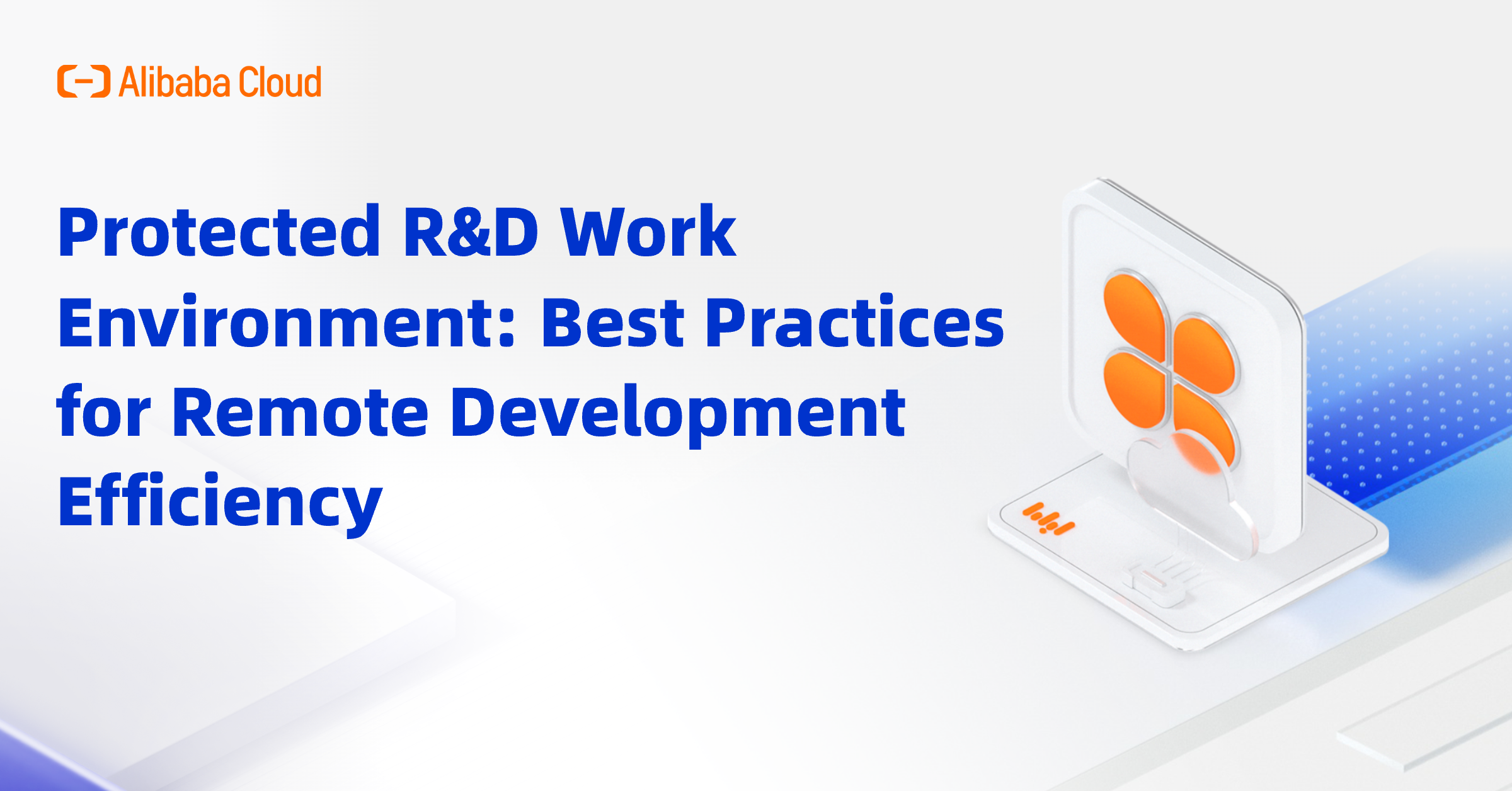Protected R&D Work Environment: Best Practices for Remote Development Efficiency
 Lara Lee
Lara Lee
As digital transformation accelerates, data has become the most critical asset for enterprises. With the shift towards outsourced R&D, Bring Your Device policies, and flexible working environments, guaranteeing the security and reliability of development environments across different scenarios is the primary concern for enterprise managers.
This blog delves into the best practices based on Alibaba Cloud's Elastic Desktop Service (EDS), which offers a comprehensive cloud-based R&D workspace.
Struggles in Data Security and Operational Effectiveness
Traditional methods of managing office computers face significant hurdles that impact data security and operational effectiveness, particularly in research and development. The key challenges are as follows:
Information Security Leaks: Data stored locally can be easily transferred via USB drives or cloud storage, risking core code and material leaks. In addition, managing external contractors is complex and their actions are hard to control.
Operational Challenges: Dispersed devices make system and software installation and updates time-consuming and labor-intensive, leading to high maintenance costs. Equipment failures slow down repair times, impacting R&D efficiency.
Lack of Flexibility: Traditional office computers struggle to meet the demands of mobile and remote work. High personnel turnover in projects can lead to resource shortages or surpluses.
High Costs: High-performance R&D computers are expensive, with significant upfront hardware investments at the start of projects. Rapid software updates can render hardware obsolete quickly.
Building Resilient R&D Environments with EDS
To address these challenges, EDS provides an integrated cloud solution designed to meet the needs of R&D teams by centralizing data, enhancing security, and supporting diverse computing demands.
The figure above explains the structure for building a secure R&D workspace environment with EDS.
Data Security: EDS supports end-to-end encryption and protection, ensuring enterprise data remains in the cloud with no local storage—features like screen recording and auditing aid in reducing data leakage risks and achieving precise security control.
Efficient Operations: Administrators can manage all cloud computers centrally online, allowing for rapid scaling and delivery. Features like application management and snapshot restoration simplify maintenance.
Flexible Working: Developers can access EDS from various devices, including personal computers, tablets, and hardware terminals, enabling seamless remote and mobile work.
Diverse Specifications: EDS offers various instance types with CPU or GPU to meet different job requirements. Flexible billing options, including annual, monthly, or on-demand billing, eliminate the need for large upfront investments.
Enhanced User Experience: EDS supports multiple display modes, while the self-developed ASP protocol automatically adapts to different application scenarios for a smooth experience.
Unlocking Enhanced Security and Efficiency
In conclusion, Alibaba Cloud's EDS is not just a product. It's a strategic investment in the future of your enterprise, helping you secure and optimize your R&D environments. It's about embracing digital transformation in a way that not only meets today's challenges but prepares you for tomorrow's opportunities.
Welcome to the future of enterprise technology, where innovation, security, and efficiency meet.
Learn more about EDS and get started for FREE today!
Subscribe to my newsletter
Read articles from Lara Lee directly inside your inbox. Subscribe to the newsletter, and don't miss out.
Written by

Lara Lee
Lara Lee
Passionate about Alibaba Cloud! Sharing insights, updates, and tips to help you navigate the world of cloud computing with Alibaba Cloud. Join me as we explore the latest innovations, best practices, and success stories from one of the world's leading cloud service providers.
